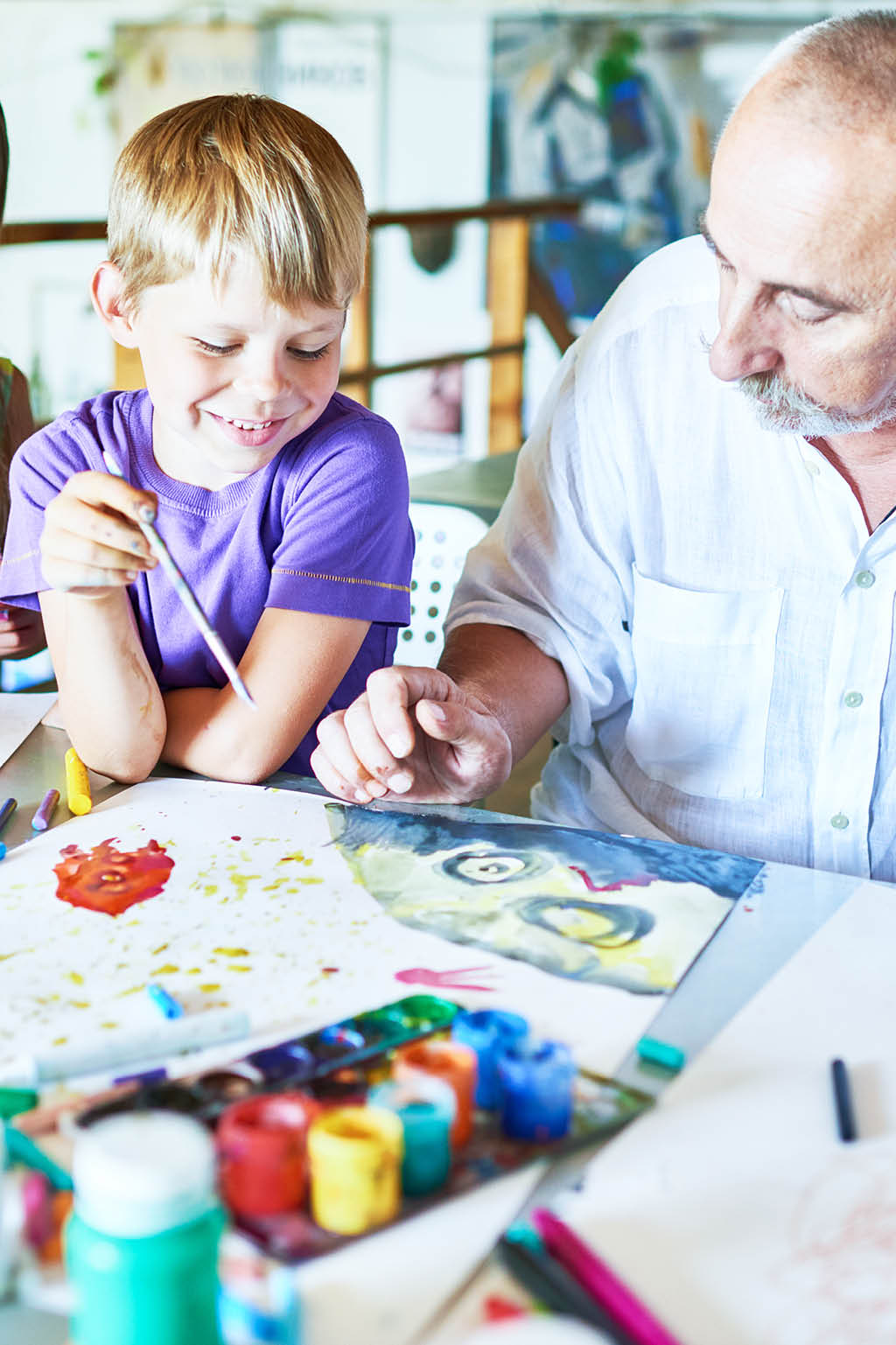The Art of Healing
When you were young, what were your favorite classes in school? For many of us, art would probably be at or near the top of the list. And that’s not a coincidence: from our very youngest age, art is a fundamental (and fun) way of expressing ourselves, learning, and exploring our world. In fact, for our earliest ancestors, this was likely their primary means of communicating with one another.
This part of our human essence is at the heart of art therapy, a field of psychology that dates back to World War II and aims to help others improve their lives by communicating and reflecting through artistic expression. In this arena, art, the creative process, and applied psychological theory combine to promote mental and emotional healing—but with paint and canvas rather than conditioning and couches.
DRAWING ON EXPERIENCE
Art therapy can be traced back to a sanatorium in 1940s England. One patient, Adrian Hill, began drawing to help pass the time as he was recovering from tuberculosis. Dubbing it “art therapy,” Hill found the practice both therapeutic and enlightening and started sharing the idea with other patients. He eventually published the first definitive book about the subject, Art Versus Illness, in 1945 and his methods started to be implemented in dozens of health institutions around the same time.
Margaret Naumburg is credited with being a leading American voice for combining art therapy with psychotherapy. She started her research in the 1930s and published her first article on art therapy in 1943. Naumburg went on to author several books on the subject and was a top advocate for the American art therapy movement through the 1960s. Another pioneer in the field was Dr. Edith Kramer—a prolific artist herself—who wrote groundbreaking works discussing art therapy’s impact on children.
By 1969, the nonprofit American Art Therapy Association (AATA) was formed. Fifty years later, the American Art Therapy Association represents several thousand members and art therapists worldwide and has nearly forty chapters throughout the United States.
A THERAPEUTIC MASTERPIECE
Unlike cultural self-help phenomena such as adult coloring books, professional art therapy requires experts to be credentialed in their field. At the minimum, an art therapist needs a master’s degree in art therapy, but he or she can also be a registered art therapist (ATR) or a board-certified registered art therapist (ATR-BC). The AATA has approved over thirty master’s-level programs in the United States and Canada and is in the process of transitioning programs to external review through the Commission on Accreditation of Allied Health Education Programs (CAAHEP). To enter one, you need to have had studio art training and foundational psychology coursework as an undergraduate.
You don’t have to be artistically gifted to receive art therapy, though—the real value lies in what’s behind your creation and what results from you creating it. An art therapist analyzes the art you create and asks pertinent questions about the subject, your process of creating the artwork, and your feelings associated with it.
This can be done through different methods. Attempts at breakthroughs may include asking you to visually brainstorm based on the image you drew, therapist-patient collaborative efforts on the art project, and even discussing the artwork from the image’s perspective. In a real sense, instead of the therapist providing an inkblot for the patient to interpret, the patient is providing the image that’s open to interpretation and analysis.
Such exchanges provide a means to communicate beyond words, giving a voice to those who may not have one or have difficulty enunciating their true emotions—and allowing what’s internal to come out. Here, the patient is in charge; the therapist meets him or her in the art (a much more comfortable setting for the latter) and helps the patient to go on a journey of self-discovery or rediscovery through the art. A common phrase used in the field sums it up well: telling without talking.
USING BROAD STROKES
Art therapy is able to help a wide range of people, so many different types of facilities have art therapists on staff, including hospitals, crisis centers, schools, rehab facilities, and senior communities; art therapists are even deployed to help people affected by disasters. No matter the setting or situation, though, art therapists share a common goal: providing a safe means of self-expression to encourage stories to come out and hope to be restored.
So a mother with Alzheimer’s disease may be able to associate memories to her family members or important events through what she paints, providing a connection that her family thought might not be possible. A child who has walled herself off verbally and emotionally because she experienced trauma can communicate about it visually on the canvas and learn to trust again. Likewise, an autistic adolescent who is otherwise unable to speak verbally can “speak” through his drawing. A cancer patient who is having a difficult time expressing his fears about his condition can show it through his art. An incarcerated person can express anger, fear, or worries through art without fear of showing weakness or suffering retaliation.
Art therapy seems ideally suited for a twenty-first century world. The truth is, we have more means of communication today than we have had at any time in human history—and yet we also have more reasons not to communicate. And a lot of people, from all walks of life, are suffering as a result. By bringing people back to one of humanity’s primal means of communication and encouraging them to embrace it for their own benefit, art therapy is uniquely qualified to unlock their innermost thoughts and feelings. In doing so, art therapists show that the nonverbal has as much value as the verbal when it comes to finding self-worth and becoming whole again.
For more info, visit arttherapy.org









